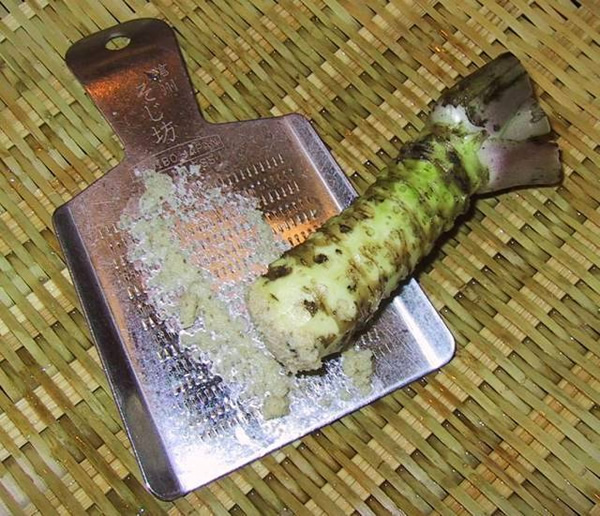The Case of the Missing Ancestor
DNA from a cave in Russia adds a mysterious new member to the human family.
by Jamie Shreeve
In the Altay Mountains of
southern Siberia, some 200 miles from where Russia touches Mongolia,
China, and Kazakhstan, nestled under a rock face about 30 yards above a
little river called the Anuy, there is a cave called Denisova. It has
long attracted visitors. The name comes from that of a hermit, Denis,
who is said to have lived there in the 18th century. Long before that,
Neolithic and later Turkic pastoralists took shelter in the cave,
gathering their herds around them to ride out the Siberian winters.
Thanks to them, the archaeologists who work in Denisova today,
surrounded by walls spattered with recent graffiti, had to dig through
deep layers of goat dung to get to the deposits that interested them.
But the cave’s main chamber has a high, arched ceiling with a hole near
the top that directs shimmering shafts of sunlight into the interior, so
that the space feels holy, like a church.
In
the back of the cave is a small side chamber, and it was there that a
young Russian archaeologist named Alexander Tsybankov was digging one
day in July 2008, in deposits believed to be 30,000 to 50,000 years old,
when he came upon a tiny piece of bone. It was hardly promising: a
rough nubbin about the size and shape of a pebble you might shake out of
your shoe. Later, after news of the place had spread, a
paleoanthropologist I met at Denisova described the bone to me as the
“most unspectacular fossil I’ve ever seen. It’s practically depressing.”
Still, it was a bone. Tsybankov bagged it and put it in his pocket to
show a paleontologist back at camp.
The
bone preserved just enough anatomy for the paleontologist to identify
it as a chip from a primate fingertip—specifically the part that faces
the last joint in the pinkie. Since there is no evidence for primates
other than humans in Siberia 30,000 to 50,000 years ago—no apes or
monkeys—the fossil was presumably from some kind of human. Judging by
the incompletely fused joint surface, the human in question had died
young, perhaps as young as eight years old.
Anatoly
Derevianko, leader of the Altay excavations and director of the
Institute of Archaeology and Ethnography in Novosibirsk, thought the
bone might belong to a member of our own species, Homo sapiens. Sophisticated
artifacts that could only be the work of modern humans, including a
beautiful bracelet of polished green stone, had previously been found in
the same deposits. But DNA from a fossil found earlier in a nearby cave
had proved to be Neanderthal, so it was possible this bone was
Neanderthal as well.
Derevianko
decided to cut the bone in two. He sent one half to a genetics
laboratory in California; so far he has not heard from that half again.
He slipped the other half into an envelope and had it hand-delivered to
Svante Pääbo, an evolutionary geneticist at the Max Planck Institute for
Evolutionary Anthropology in Leipzig, Germany. It was there that the
case of the Denisovan pinkie bone took a startling turn.
Pääbo,
a transplanted Swede, is arguably the world’s leading expert in ancient
DNA, especially human DNA. His milestones are many. In 1984 he became
the first person to isolate DNA from an Egyptian mummy. In 1997 he
accomplished the same feat for the first time with a Neanderthal, a kind
of human that vanished more than 25,000 years before the Egyptian
pharaohs. That secured his scientific reputation.
When
Pääbo received the package from Derevianko, his team was hard at work
producing the first sequence of the entire Neanderthal genome—another
feat that had once seemed impossible and that was occupying most of his
attention. His lab also had a backlog of other fossils to test from all
parts of the globe. So it wasn’t until late 2009 that the little Russian
finger bone drew the attention of Johannes Krause, at the time a senior
member of Pääbo’s team. (He’s now at the University of Tübingen.) Like
everyone else, Krause assumed the bone was from an early modern human.
He had developed a method for distinguishing the DNA of such a fossil
from that of the archaeologists, museum workers, and anyone else who
might have handled and therefore contaminated it.
Krause
and his student Qiaomei Fu extracted the finger bone’s mitochondrial
DNA (mtDNA), a small bit of the genome that living cells have hundreds
of copies of and that is therefore easier to find in ancient bone. They
compared the DNA sequence with those of living humans and Neanderthals.
Then they repeated the analysis, because they couldn’t believe the
results they’d gotten the first time around.
On
a Friday afternoon, with Pääbo away at a meeting at Cold Spring Harbor
Laboratory on Long Island, Krause called a meeting of the lab staff and
challenged anyone to come up with a different explanation for what he
was seeing. No one could. Then he dialed Pääbo’s cell. “Johannes asked
me if I was sitting down,” Pääbo remembers. “I said I wasn’t, and he
replied that I had better find a chair.”
Krause
himself recalls that Friday as “scientifically the most exciting day of
my life.” The tiny chip of a finger bone, it seemed, was not from a
modern human at all. But it wasn’t from a Neanderthal either. It
belonged to a new kind of human being, never before seen.
In July 2011, three
years after Tsybankov unearthed the bone chip, Anatoly Derevianko
organized a scientific symposium at the archaeological camp a few
hundred yards from Denisova cave. At an opening night dinner punctuated
with frequent toasts of vodka, Derevianko welcomed the 50 researchers,
including Pääbo, who had come to see the cave and share their views on
how the mysterious new human fit into the fossil and archaeological
record for human evolution in Asia.
The
year before, two other fossils had been found to contain DNA similar to
that of the finger bone, both of them molars. The first tooth had
turned up among the specimens from Denisova housed at Derevianko’s
institute in Novosibirsk. It was bigger than either a modern human or a
Neanderthal tooth, in size and shape resembling the teeth of much more
primitive members of the genus Homo who lived in Africa millions
of years ago. The second molar had been found in 2010 in the same cave
chamber that had yielded the finger bone—indeed, near the bottom of the
same 30,000-to-50,000-year-old deposits, called Layer 11.
Remarkably,
that tooth was even bigger than the first, with a chewing surface twice
that of a typical human molar. It was so large that Max Planck
paleoanthropologist Bence Viola mistook it for a cave bear tooth. Only
when its DNA was tested was it confirmed to be human—specifically,
Denisovan, as the scientists had taken to calling the new ancestors. “It
shows you how weird these guys are,” Viola told me at the symposium.
“At least their teeth are just very strange.”
Pääbo’s
team could extract only a tiny amount of DNA from the teeth—just enough
to prove they came from the same population as the finger, though not
from the same individual. But the finger bone had been spectacularly
generous.
DNA
degrades over time, so usually very little remains in a bone tens of
thousands of years old. Moreover, the DNA from the bone itself—called
endogenous DNA—is typically just a tiny fraction of the total DNA in a
specimen, most of which comes from soil bacteria and other contaminants.
None of the Neanderthal fossils Pääbo and his colleagues had ever
tested contained even 5 percent endogenous DNA, and most had less than
one percent. To their amazement, the DNA in the finger bone was some 70
percent endogenous. Apparently, the cold cave had preserved it well.
Given
so much DNA, the scientists easily ascertained that there was no sign
of a male Y chromosome in the specimen. The fingertip had belonged to a
little girl who had died in or near Denisova cave tens of thousands of
years before. The scientists had no idea, at first, what she looked
like—just that she was radically different from anything else they had
ever seen.
For
a while they thought they might have her toe too. In the summer of 2010
a human toe bone had emerged, along with the enormous tooth, from Layer
11. In Leipzig a graduate student named Susanna Sawyer analyzed its
DNA. At the symposium in 2011 she presented her results for the first
time. To everyone’s shock, the toe bone had turned out to be
Neanderthal, deepening the mystery of the place.
The
green stone bracelet found earlier in Layer 11 had almost surely been
made by modern humans. The toe bone was Neanderthal. And the finger bone
was something else entirely. One cave, three kinds of human being.
“Denisova is magical,” said Pääbo. “It’s the one spot on Earth that we
know of where Neanderthals, Denisovans, and modern humans all lived.”
All week, during breaks in the conference, he kept returning alone to
the cave. It was as if he thought he might find clues by standing where
the little girl may have stood and touching the cool stone walls she too
may have touched.
Pääbo grew up in
Stockholm with his single mother, a chemist, and on certain days with
his father, a biochemist named Sune Bergström, who had another,
legitimate family and would later win a Nobel Prize. Pääbo’s own first
passion was Egyptology, but he switched to molecular biology, then fused
the two interests in 1984 with his work on mummy DNA. Once anchored in
the study of the past, he never let go. He is 58 now, tall and lanky,
with large ears, a long, narrow head, and pronounced eyebrows that arch
up and down animatedly when he’s excited—about Denisova, for instance.
How
had all three kinds of human ended up there? How were Neanderthals and
Denisovans related to each other and to the sole kind of human that
inhabits the planet today? Did their ancestors have sex with ours? Pääbo
had a history with that kind of question.
The
Neanderthal DNA he had made headlines with in 1997 was utterly
different from that of any person now alive on Earth. It seemed to
suggest that Neanderthals had been a separate species from us that had
gone extinct—suspiciously soon after our ancestors first migrated out of
Africa into the Neanderthals’ range in western Asia and Europe. But
that DNA, like Krause’s first extract from the Denisovan finger, was
mtDNA: It came from the mitochondria, the energy-producing organelles
inside the cell, and not from the cell nucleus, where the vast bulk of
our genome resides. Mitochondrial DNA includes only 37 genes, and it’s
inherited only from the mother. It’s a limited record of a population’s
history, like a single page torn from a book.
By
the time of the Denisova symposium, Pääbo and his colleagues had
published first drafts of the entire Neanderthal and Denisovan genomes.
Reading so many more pages allowed Pääbo and his colleagues, including
David Reich at Harvard University and Montgomery Slatkin at the
University of California, Berkeley, to discover that human genomes today
actually contain a small but significant amount of Neanderthal code—on
average about 2.5 percent. The Neanderthals still may have been swept
into extinction by the strange, high-browed new people who followed them
out of Africa, but not before some commingling that left a little
Neanderthal in most of us, 50,000 years later. Only one group of modern
humans escaped that influence: Africans, because the commingling
happened outside that continent.
Although
the Denisovans’ genome showed that they were more closely related to
the Neanderthals, they too had left their mark on us. But the geographic
pattern of that legacy was odd. When the researchers compared the
Denisovan genome with those of various modern human populations, they
found no trace of it in Russia or nearby China, or anywhere else, for
that matter—except in the genomes of New Guineans, other people from
islands in Melanesia, and Australian Aborigines. On average their
genomes are about 5 percent Denisovan. Negritos in the Philippines have
as much as 2.5 percent.
Putting
all the data together, Pääbo and his colleagues came up with a scenario
to explain what might have occurred. Sometime before 500,000 years ago,
probably in Africa, the ancestors of modern humans split off from the
lineage that would give rise to Neanderthals and Denisovans. (The most
likely progenitor of all three types was a species called Homo heidelbergensis.)
While our ancestors stayed in Africa, the common ancestor of
Neanderthals and Denisovans migrated out. Those two lineages later
diverged, with the Neanderthals initially moving west into Europe and
the Denisovans spreading east, perhaps eventually populating large parts
of the Asian continent.
Later
still, when modern humans ventured out of Africa themselves, they
encountered Neanderthals in the Middle East and Central Asia, and to a
limited extent interbred with them. According to evidence presented by
David Reich at the Denisova symposium, this mixing most likely occurred
between 67,000 and 46,000 years ago. One population of modern humans
then continued east into Southeast Asia, where, sometime around 40,000
years ago, they encountered Denisovans. The moderns interbred with them
as well and then moved into Australasia, carrying Denisovan DNA.
This
scenario might explain why the only evidence so far that the Denisovans
even existed is three fossils from a cave in Siberia and a 5 percent
stake in the genomes of people living today thousands of miles to the
southeast. But it left a lot of questions unanswered. If the Denisovans
were so widespread, why was there no trace of them in the genomes of Han
Chinese or of any other Asian people between Siberia and Melanesia? Why
had they left no mark in the archaeological record—no distinctive
tools, say? Who were they really? What did they look like? “Clearly we
need much more work,” Pääbo acknowledged at the Denisova symposium.
The
best of all possible developments would be to find Denisovan DNA in a
skull or other fossil with distinctive morphological features, one that
could serve as a Rosetta stone for reexamining the whole fossil record
of Asia. There are some intriguing candidates, most from China, and
three skulls in particular, dated between 250,000 and 100,000 years ago.
Pääbo is working closely with scientists at the Institute of Vertebrate
Paleontology and Paleoanthropology in Beijing and has set up a DNA
testing lab there. Unfortunately DNA does not preserve well in warmer
climates. To date, no other fossil has been identified as Denisovan by
the only way Denisovans can be known: their DNA.
In 2012 Pääbo’s group published
a new version of the finger bone’s genome—astonishingly, one that in
accuracy and completeness rivals any living human’s genome that has been
sequenced. The breakthrough came from a German postdoc in Pääbo’s lab
named Matthias Meyer. DNA consists of two interlocking strands—the
familiar double helix. Previous methods for retrieving DNA from fossil
bone could read out sequences only when both strands were preserved.
Meyer had developed a technique for recovering short, single-stranded
fragments of DNA as well, greatly increasing the amount of raw material
to work with. The method produced a version of the Denisovan girl’s
genome so precise that the team could discriminate between genetic
information inherited from her mother and that from her father. In
effect, they now had two highly accurate Denisovan genomes, one from
each parent. These in turn opened a window on the entire history of
their population.
One
immediate revelation was how little variation there was between the
parents’ genomes—about a third as much as there is between any two
living humans. The differences were sprinkled across the genomes, which
ruled out inbreeding: If the girl’s parents had simply been closely
related, they would have had huge chunks of exactly matched DNA. The
pattern indicated instead that the Denisovan population represented by
the fossil had never been large enough to have developed much genetic
diversity. Worse, it seemed to have suffered a drastic decline sometime
before 125,000 years ago—the little girl in the cave may have been among
the last of her kind.
Meanwhile
the ancestral population of modern humans was expanding. Myriad
fossils, libraries full of books, and the DNA of seven billion people
are available to document our subsequent population history. Pääbo’s
team discovered a completely different one inside a single bone chip.
The thought tickles him. “It’s incredibly cool that there is no one
walking around today with a population history like that,” Pääbo told
me, his eyebrows shooting up.
And
yet the Denisovans also have something to say about our own kind. With
virtually every letter of the Denisovan genetic code in hand, Pääbo and
his colleagues were able to take aim at one of the profoundest
mysteries: In our own genomes, what is it that makes us us? What
defining changes in the genetic code took place after we separated from
our most recent ancestor? Looking at the places where all living humans
share a novel genetic signature but the Denisovan genome retains a
primitive, more apelike pattern, the researchers came up with a
surprisingly short list. Pääbo has called it the “genetic recipe for
being a modern human.” The list includes just 25 changes that would
alter the function of a particular protein.
Intriguingly,
five of these proteins are known to affect brain function and
development of the nervous system. Among them are two genes where
mutations have been implicated in autism and another that’s involved in
language and speech. Just what those genes actually do to make us think,
act, or talk differently than Denisovans, or any other creature that
has walked the Earth, remains to be seen. The lasting contribution of
studying Denisovan DNA, Pääbo says, “will be in finding what is
exclusively human.”
But
what of the little girl herself? The tiny bit of bone that is all we
ever had of her—or at least the half that went to Leipzig—is gone now.
In pulling DNA from it, Johannes Krause and Qiaomei Fu eventually used
it all up. The little girl has been reduced to a “library” of DNA
fragments that can be exactly copied again and again forever. In the
scientific paper discussing the history of her population, Pääbo and his
colleagues did mention, almost in passing, a few facts about her that
they had gleaned from that library: She probably had dark hair, dark
eyes, and dark skin. It isn’t much, but at least it sketches in broad
strokes what she looked like. Just so we know whom to thank.













 French astrophotographer Thierry
Legault had perfect timing. He captured an image of the Chinese space
station Tiangong-1 crossing the path of the sun. At Bad Astronomy, Phil
Plait writes:
French astrophotographer Thierry
Legault had perfect timing. He captured an image of the Chinese space
station Tiangong-1 crossing the path of the sun. At Bad Astronomy, Phil
Plait writes:
